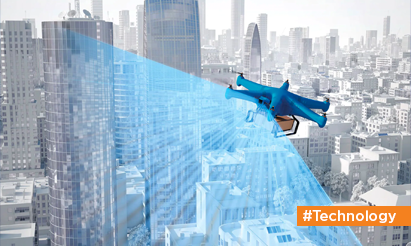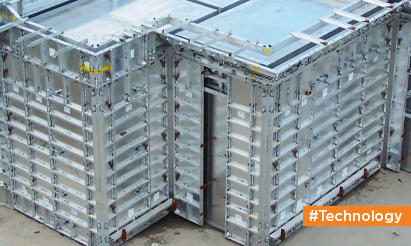Top Five futuristic building technologies!
Almost every area of real estate is influenced by technology. Technology is enhancing how construction organisations produce structures and infrastructure projects, whether in architecture, engineering, or construction. Let us have a look at some of the cutting-edge technologies that are changing the face of building in India.
Technology has just finally started to transform the construction business, and the Five technical advances listed below are best suited to take the sector by storm:
Self-healing concrete
The most common application of concrete is in construction. In fact, it is the second most consumed chemical on the planet. Consider all of the concrete homes, buildings, churches, and bridges built each year. This is due to the fact that concrete is inexpensive and extensively applicable. If exposed to high heat or cold, it might crack and decay.
Previously, the only method to repair broken concrete was to patch it, reinforce it, or tear it down and start over. However, small capsules of sodium silicate can now be inserted in the concrete mix. The capsules shatter when the fracture forms, releasing a gel-like healing ingredient that hardens to fill the space.
Carbon nanotubes
A nanometer is a billionth of a metre. It is really little. A single sheet of paper, for example, contains 100,000 nanometers, and your fingernails grow at a rate of around one nanometer every second.
It may appear that building materials on the ‘nanoscale’ is unachievable. Nevertheless, Aman Trehan, Executive Director of Trehan Iris, believes that cutting-edge methods like as electron-beam lithography enable the creation of carbon tubes with walls as thin as a nanometer. Carbon nanotubes are also so light and strong that they may be implanted in construction materials such as metals, concrete, wood, and glass, in addition to imparting density and tensile strength to them. Additionally, nanoscale sensors that monitor strain inside building materials can identify fractures or cracks before they occur, potentially saving lives.
Transparent aluminium
For decades, chemical engineers dreamed of creating a material that combined the robustness and durability of metal with the beauty and purity of glass. The adoption of such a transparent metal would allow the building of glass-walled skyscrapers with minimal internal support. ALON, sometimes known as translucent aluminium, is a novel material that combines the strength of steel with the lightness of aluminium.
With a material this robust and lightweight, structures might be constructed considerably taller than previously, maximising the options available on a limited quantity of land. Furthermore, it alleviates most of the tension associated with construction materials, particularly in large and tall structures.
Permeable concrete
Permeable or subsurface concrete has bigger pebbles and sand grains that leave 15-35 percent of the pavement exposed. The permeable concrete slab lies on top of a porous base, allowing rainfall to percolate into the soil. In parking lots, it is a viable substitute to asphalt. The lighter colour of concrete, in addition to minimising runoff, reflects sunlight and makes the region cooler in the summer.
Robot swarm construction
The usage of robot swarms in AEC entails a large number of tiny machines doing difficult building tasks as effectively as a nest of termites. Furthermore, by reducing the need on construction labour, these dramatically lower building construction costs.
Disclaimer: The views expressed above are for informational purposes only based on industry reports and related news stories. PropertyPistol does not guarantee the accuracy, completeness, or reliability of the information and shall not be held responsible for any action taken based on the published information.



